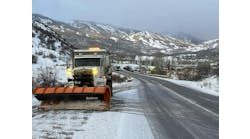By Diana Clonch, Contributing Author
The snow and ice community has long struggled with recruitment and retention issues. It can’t be overstated how crucial it is to have available, qualified, and dependable staff to support the ongoing needs, tasks, responsibilities, and obligations associated with winter maintenance.
The issues are not unique to snow and ice control. Indeed, it extends to all areas of operations and maintenance.
Many variables contribute to the inability to successfully recruit and retain individuals in these roles. Identification of the variables can typically provide a footprint for establishing potential strategy and countermeasures aimed at creating a more successful approach for achieving desired outcomes.
Additionally, greater consideration is being given to the evolution of today’s workforce and the changing face of that which represents the “traditional” operations and maintenance worker.
One such area of focus is the recruitment and retention of females in the traditionally male dominated maintenance and operations workforce.
While the 2019 U.S. Bureau of Labor Statistics cite women as making up nearly 47% of the total workforce, the percentages as reported for public works leadership and highway maintenance operations are drastically lower.
The American Public Works Association cites less than 20% of public works leadership positions as occupied by females and Data USA details 98.3% of all highway maintenance workers in the country as male. Likewise, other sources site women as occupying varying roles for transit operations and professional/technical positions; however, the percentages as compared to male counterparts remain on the low end in all categories.
The face of the workforce for winter operations mirrors that of the overall highway maintenance and operations workforce. While some agencies, such as those found in Washington D.C. and Cleveland, Ohio, have a snow fighting team of nearly 20% women.
This is not the norm among public works agencies and highway department organizations found across the nation. One source cited the average percentage found from a review of 11,000 snowplow operators across the U.S. as being less than 10% female.
However small the percentage, there are women who work in highway operations, maintenance, public works, contracting, and snow fighting roles. And some have been in these roles for years.
It may prove beneficial to take a closer look at their journeys as an effort to identify key characteristics that have attracted and retained them to such roles. And that could help recruit and retain more women to our industry’s workforce.
Though limited in number, the women who contribute to the winter maintenance community’s efforts provide great insight for all snow fighters seeking ways to learn, adapt, and overcome.
For the past 3 years, women from around the country’s public works community have been sharing their stories in an effort to offer support to other women who are considering untraditional roles in this industry.
The Women of Winter (WOW) made its in person debut at the 2022 American Public Works Association (APWA) North American Snow Conference in Pittsburgh. The group’s presentation focused on promoting the women who have dedicated their careers to winter maintenance.
WOW showcased the stories of 17 women who work in varying roles. Seven of those spotlighted were present at the session to share their background, insight, and wisdom.
WOW is important because it creates a network, and creating a network that offers resources and support is crucial for women in our industry. Research has shown the common denominator of those who remained employed in a difficult environment is support and/or consistency in mentorship.
Cleveland’s maintenance and operation workforce is nearly 20% female. Cleveland’s Director of Public Works, Frank D. Williams, cites intentionality and education as the two main factors contributing to the success.
“Making sure people know the various positions exist and educating folk on the process of onboarding are extremely important,” Williams said.
Recruitment and retention of females also requires outreach and marketing. Employers should understand how women search for jobs, why women retain and/or vacate positions, and what is required within the organization to create a culture of support and acceptance.
One presenter at the WOW session in Pittsburgh said: “Stop asking if a woman can do the job and start asking why there isn’t a woman doing the job?”
Overcoming culture norms is a critical element to achieving success for the employment and retention of females in these typically male dominated roles.
WOW’s presentation is a snapshot of the feedback from women from across the country. They provide significant insight into avoiding pitfalls and achieving positive outcomes for women who are interested in winter maintenance and potential employers.
The Snow and Ice Management Association (SIMA) held a similar session at the 26th annual Snow & Ice Symposium in Hartford, Conn. At the women in snow roundtable session, attendees were encouraged to share knowledge, experience, and network with peers.
Cheryl Higley, SIMA’s director of education and content, said: “We do the women in snow roundtable networking every year, and I thought it would be a good opportunity to bring a growing population in the industry together for real conversations about challenges and how to succeed in this male-dominated industry. We have a lot of great women elevating this industry, and I want to give them an opportunity to connect with each other and start building that network.”
The rise of support groups, networking events, and mentorship for women has reached other industries where women are minorities.
As the winter maintenance industry, as well as the roads and bridges construction industry at-large, continues to struggle with a labor shortage, it is vital to American infrastructure that women are supported and encouraged to tackle these nontraditional roles. R&B
Diana Clonch is the owner of DW Clonch, LLC.



